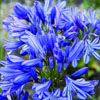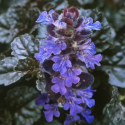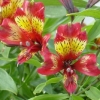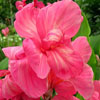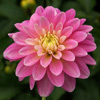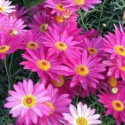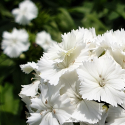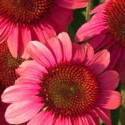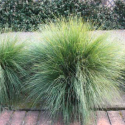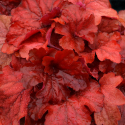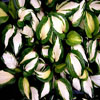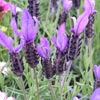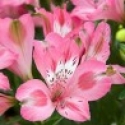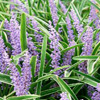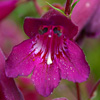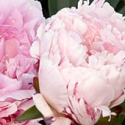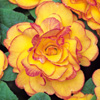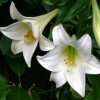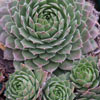Perrenials for sale in New Zealand
At Wairere Nursery we have selected a range of top performing perennials to complement any garden style. We specialize in hardy plants that can be planted in large drifts to create maximum impact. We have an extensive range of evergreen Hemerocallis (Day Lilies) and Agapanthus for the warmer parts of the garden and Hostas, Clivias and Hellebores (Winter Rose) for the cooler shady areas. If you are looking for ground-cover or edging perennials then take a look at our Ophiopogon and Liriope collections. For added colour and interest we stock a good selection of Arctotis, Gazania, Irises, Nepeta (Cat Mint) along with many more seasonal delights. Harry and Lloyd, with their extensive horticultural experience, are happy to help you choose the just the right plant for the right place. Click on the link below to browse our secure web-site.Your selection can be carefully packaged and freighted direct to your door or if you prefer collected from our Waikato Nursery at 826 Gordonton Road, R. D. 1 Hamilton.
The name Agapanthus comes from the Greek Agape which means love and Anthos which means flower. Agapanthuses originate from Southern Africa. They are a clump forming rhizomatous perennial with fleshy roots and strap like green foliage. The flowers come in tones of blue or white and are borne in abundance on erect stems during summer. They can be very tall or very small. As a general rule the more miniature forms with narrow foliage are hardier than the larger wider leaf forms. Some are fully deciduous and others are evergreen. All are easy to grow and very tolerant of less than ideal conditions, just look at the mass plantings done along motorway strips etc. What other perennial do you know that would grow so well in such adverse conditions? They are beautiful and long lasting in a vase. So take another look at the Lily of Nile and if you have a difficult site where nothing else will grow this African Beauty will probably be very happy to set up home there.
A rhizome is a horizontal stem of a plant that is usually found underground and often sends out roots and shoots from its nodes. The genus consists of about 25 species. The interesting thing about these plants is that they do not have true stems. Instead, what apear to be stems are collections of tightly furled leaf bases, rising from the rhizomes.
The flowers are carried on slender stems that arise from the false stems and are narrow-petalled in the wild varieties but broad-petalled in the hybrids. Some of the varieties have large, crumpled flowers with striking variegations, a few of which resemble orchids. They flower in a wide range of vibrant colours, from yellows through oranges and reds, apricots, creams and pinks and some have a speckled apearance.
The more modern hybrids now have fantastic leaf colours as well: a variety of greens, purples and bronzes with stripes of contrasting colours in symmetrical forms, which provide a colorful display even when the plant is not flowering. Cannas are very forgiving and will grow in most conditions apart from frost. They can, however, be grown in cooler areas by lifting the rhizomes over winter and storing them in hessian sack in a warm place until spring. They are sun-loving plants which thrive in hot dry weather as long as they have sufficient water.
Cut back hard after flowering. Do check to see how tall your Canna of choice grows as they vary in height from 45cm to 2.4m.Some species are also grown as potted plants. They can be used in herbaceous borders, where the large leaves provide a strong element of contrast to other textures, tropical plantings, as a patio or decking plant and in wet areas.
Dahlias provide great colour in the garden from summer through to autumn and come in a huge variety of colours and flower forms such as cactus, colarette, decorative and pompon. Sunlight is important for dahlia growth and for maximum flower production, so plant them in a sunny spot. Dahlias grow best in rich well-drained soil so work in some organic matter to your soil if need be.
Patio Dahlias are ideal for containers as they have been bred to remain compact and flower prolifically. Place them where they will receive full sun and keep well watered in summer. Dahlias make great cut flowers and dead heading will encourage them to re-bloom.
This group includes Arctotis Daisy, Federation Daisy, Cape Daisy, Marguerite Daisy, Shasta Daisy, Gazania, Gerbera, etc.
The true Geranium is quite a hardy perennial that fits well in the perennial border or wild flower gardens. The lobed leaves can be evergreen or perennial and are held on fine stalks. Often the foliage is highly aromatic. The sweet and simple flowers have 5 petals and come in tones of white, pink, purple or blue. Easy to grow in sun or light shade they are ideal for mass planting or for use as a pretty ground-cover. The common name 'Cranesbill' comes about from the shape of the seed head. It is also the interpretation of the botanical name; Gerano being the Greek for Crane.
In 2013 Geranium 'Rozanne' was voted Plant of the Century by the Royal Horticultural Society. That is a significant award and quite well deserved in my opinion. 'Rozanne' is a fabulous garden plant that flowers for months on end. You may also be interested to know that there are true Geraniums that are endemic to New Zealand.
These plants add texture, can define a space, and add movement and colour in a garden. Often called architectural plants, they come in a range of types, colours, forms, heights, some are stiff and formal, others more casual. Many are native to NZ.
The Winter Rose is a true gift from Mother Nature as they bring joy and delight to the garden during a time of year when there are very few other flowers to admire. Hellebores establish reasonably quickly and with the right amount of care and attention soon form a good solid clump with many stems of gorgeous blooms rising above the foliage from about July through to October.
Hellebores originate from Europe and Western Asia. They prefer a soil that is moist yet not damp and cloggy. They should not dry out in summer if at all possible. They love a side dressing of lime - probably best aplied just before flowering. They also will thank you for a mulch of well rotted compost or organic matter being aplied after flowering. Any old tired looking leaves can be removed just as the new flower buds apear in June/July. This will make the flowers stand out and give the new leaves the oportunity to emerge.
Hellebores are notoriously promiscuous and will cross pollinate and seed exceptionally well. If you dont want a carpet of these little seedlings then it would be best to remove any spent flower heads towards spring. Any little seedlings that do emerge are quite tenacious once they get their roots into the ground and take a bit of an effort to weed out. Therefore the sooner you deal with them the better. Mind you if you want to fill your garden with Hellebores then this is the easy way to do it!
Hellebores are most effective planted in drifts or massed in the shade of deciduous trees. In NZ they are definitely better with protection from our harsh afternoon sun. Hellebores will grow in full sun but this is not their ideal location and watering in summer becomes essential. Watch for aphids in late spring and summer, they love to hide under the large leaves. The aphids dont seem to do a lot of damage but it is advisable to eliminate them. Slugs and snails can sometimes be a nuisance as well as they like to hide in the middle of the clumps.
At Wairere we often have discussions about plants we cant live without. Most of us have a list that is far too long but all of us would definitely include Hellebores in our top 10!
Hemerocallis (hay-me-ro-ka-lis) AKA Day lilies are so named because the individual flowers only last a day. Don't for one minute think this means a poor floral display as there are so many buds borne on the many stems that that you will hardly notice that just one of the flowers has finished its display. Day lilies are almost fool proof plants in that they are remarkably easy to grow. They are very tolerant of soil type and have a survival instinct that will surprise even the most neglectful gardener. Happiest in full sun but tolerant of light shade; preferably in soil that does not get bone dry.
At Wairere we stock predominantly evergreen Day Lilies. Your new plant will quickly form a clump of broad grassy like foliage. You will have to watch for slugs and snails making a home in the centre of the clump, so use your preferred method of dispatch every now and then. In spring flower stems will start to appear and should continue through to mid summer. Some sporadic flowering can occur through to autumn. The colour range is fantastic from pure white, brightest yellow, lemon yellow, deep wine red, peach, pink, crimson, salmon, etc, etc. Flowers can be large or small, single, double, wavy or frilly. Day Lilies are not renowned for their fragrance but many do have a soft pleasant perfume. Clumps can be tidied easily with the tugging off of scruffy looking foliage or just simply cut back the whole plant (you can be quite ruthless) and watch fresh new leaves appear almost immediately.
Use to quickly fill a blank space in the garden, cover banks or suppress weeds. Intersperse in the perennial border or you can even use as a container plant. If you lived in China or Japan you would probably throw some in the wok when doing a stir fry as Day Lilies are cultivated as a food crop in these countries. All parts of the plant are edible and the buds are particularly delicious. I like sprinkling the flowers in a summer salad.
Whether you are an experienced gardener or a novice, Day Lilies are certainly worth adding to your wish list for ease of care and long flowering period.
For most herbs, it’s leaf or flower, we use - either dried or fresh.
Herbs can be grown in pots, containers, and gardens, indoors or out. When growing herbs together in one container, select varieties with similar habits, for example chives, mint, chervil and coriander like plenty of water, whereas rosemary, thyme, sage and oregano prefer well-drained soil. Clipping back and regular picking will help control the rampant habit or some herbs, and promote a continuous supply.
Hostas are fabulous foliage perennials that only get better with age. The exotic, tropical looking, large, luscious deciduous leaves emerge in mid spring and even after just a year or two they will have formed handsome clumps. In summer these clumps are topped off with stems of bell shaped flowers that are either white or various shades of mauve. The flowers are often perfumed. Whilst the flowers are beautiful it is the foliage which is the star attraction. The leaves can be puckered or smooth, long and narrow, or curvaceous and round, large or small. The foliage colour ranges from grey/blue through to green, yellow, lime or variegated. The strongest statement will be made when one or two complementary varieties are planted en masse. Hostas are shade lovers and are ideal for naturalising under deciduous trees or in woodland gardens. Where at all possible they should be protected from afternoon sun.
Hostas also love rich moist soil and will do quite nicely on the edge of a stream or pond. If your planting position is too hot and dry the quality of the foliage will be severely compromised but you may find that you will get more flowers. Hostas are very hardy and once planted in a position that suits them they will be relatively undemanding. Unfortunately Hostas are much loved by slugs and snails especially when the new foliage is emerging therefore it is important to guard against these "chompers" with your preferred method of control and/or despatch. In my experience I have found that once the clumps are mature with little space between them, they aren't such an obvious target. Aplying a layer of wood chip or bark also helps as snails don't like crawling across the rough surface.
If you are looking to add a lush tropical look to your garden but need frost hardy plants then Hostas will certainly do the job for you. Hostas also do well in containers as long as they are regularly watered. I have found them invaluable for brightening up the shady cool areas of the house where nothing else will grow. Commonly known as the Plantain Lily (yes they are members of the Lily family) Hostas in my opinion are anything but common and provide the gardener with a top performing perennial for very little effort.
Bulbous Irises include those known as Xiphium, Reticulata and Juno. The most common of these is Iris xiphium which gives us the Dutch Iris frequently used by florists. Iris reticulata is becoming more widely available and this sweet little Iris produces dainty flowers from July to September. It is an ideal container Iris.
Rhizomatous Irises consist of groups known as Bearded, Beardless and Crested. Beardless Irises include, Pacific Coast, Siberian, Spuria, Louisiana and Japanese Irises. Beardless Irises usually have a flash of colour on the falls or lower petals; this is called a signal and is specifically designed to attract bees. Bearded Irises have a beard instead of a signal. The beard looks a bit like a fuzzy caterpillar and it too is designed to guide the bees into the flower along with trapping their pollen. Crested Irises have a small raised area called a crest instead of a signal or a beard.
Iris flowers come in a rainbow of colours and are made up of 6 petals; 3 upper petals called standards and 3 lower petals called falls. Many Irises have a wonderful fragrance. The beautiful Iris has been revered since ancient times with the rhizomes (orris root) being sought after for medicinal remedies. The Iris has also been used as a symbol in heraldry for centuries and is known as the 'Fleur de lis' which literally translated means Flower of the Lily! Not a Lily at all but an enchanting, elegant, irresistible Iris.
Who does not love Lavender? Used since time immemorial as a medicinal herb, an insect repellent, an aromatic oil and a general all round house hold essential especially when there was a bit of strewing to be done. The Romans and Greeks used Lavender when bathing and that is the origin of the botanical name Lavandula (la-van-dew-la) which comes from the Latin word lavare meaning to bathe or wash. Lavenders natural home is the Mediterranean region, the Middle East and India.
Believe it or not the much loved English Lavender does not come from England at all. It was probably introduced by a conqueror who like to smell nice and wouldn't travel anywhere without his favourite herb. History tells us that Lavender grew in England from about 1265 onwards. Talking of smelling nice Lavender is one of the main ingredients in the world famous Eau de Cologne, 4711, named after the street number of the 18th century inventor of "water from Cologne".
Lavender has a strong biblical connection too; it is mentioned several times under the name 'Spikenard'. Spikenard i.e. Lavender Oil was a precious and expensive commodity and it is written that Mary used this oil to anoint the feet of Jesus.
There are about 30 species of Lavender. They are described variously has shrubs, sub shrubs, herbs, or herbaceous perennials. They all have highly aromatic foliage and flowers but it is Lavandula angustifolia and its various cultivars that is the most popular for the production of Lavender Oil. The pungent oil is collected from the oil glands at the base of the flower spikes. Lavenders are generally short lived and in their natural habitat the volatile oil can cause spontaneous combustion which means they would be very short lived indeed!
All Lavenders are sun lovers and they prefer to grow in well drained soil. They will grow happily with little or no fertilizer. Lavenders are best trimmed after flowering. If you wish the discarded flowers can be dried for pot pourri etc. Bees love Lavender flowers so make sure you plant a couple of bushes near the vegetable plot or orchard for pollination purposes. Great for hedging or edging, perfect in the perennial border and lovely in a pot. Love Lavender? We certainly do.
Lavender was strewed throughout houses during the Great Plague of London (1665) as it was thought to be a protection against disease.
The Lily hybrids known as Asiatic Lilies are also available in a mind boggling array of colours. The bulbs propagate themselves and after a couple of years you will find that the single bulb you once planted has multiplied and you now have a veritable clump of gorgeous blooms that reapear each year.
Be sure to mark the spot where they reside before they disapear underground each year so that you don’t go and run your spade through them in your desire to ‘fill the gap’ in the winter months.
AKA Lily Turf / Mondo Grass / Liriope The average gardener would be hard pressed to tell the difference between Liriope and Ophiopogon as they apear to be very similar which in fact they are. To assist you to make the correct choice for your garden design or planting scheme I will explain the main points of difference in simplistic terms.
Liriope tends to have broader leaves than Ophiopogon. Liriope also forms a clump that more or less stays where it is put but gently increases in size. This means it is ideal for planting in rows or edging a path etc. Ophiopogon on the other hand tends to creep along the ground and pop up in a more random fashion. This is because of the underground creeping stolons or tubers. Ophiopogon are an excellent choice as a ground cover or rockery plant. It doesn't mean they should be excluded for edging as any unwanted apearances can be dealt with very easily and either discarded or used in another part of the garden. The flowers that apear in summer look similar. The main point of difference being that they are held above the foliage of Liriope and tend to be a little more hidden with Ophiopogon.
Now that we've got that sorted all you really need to know is that both these perennials are tough, hardy and easy to grow. They like a slightly acidic soil that is not too heavy (e.g. not clay) however, overall they are remarkably tolerant and adaptable. In our harsh afternoon sun you may notice a little leaf scorch but this will not cause great harm and once again the plants are remarkably able to adapt to their chosen position. However the best performance will be obtained if your plants are in morning sun or light shade. The clumps are evergreen and need little maintenance apart from the removal of untidy or scruffy foliage. In desperation neglected clumps can be cut back hard and new foliage will emerge quite quickly.
Leaf colour ranges from black to dark green with attractive variegated options as well. The flowers come in white, pink and mauve shades and these are often followed by shiny little berries. Both Liriope and Ophiopogon are a landscaper's dream plant for adding definition and direction and for softening the edges of pathways, and are well worth considering for their easy care, good natured, low maintenance habit.
Perennials, also known as herbaceous perennials or Herbaceous plants, live for a minimum of 2 years, often for many seasons. Perennials, grow and bloom over the spring and summer, and generally die back every autumn and winter, reappearing on the same rootstock the following spring. Some perennials keep their leaves all year round and offer attractive borders and ground-covers.
Water is stored in the thick fleshy leaves, swollen stems and sometimes even in the roots.
There are literally thousands of species in this Genus and because they are so tolerant and easy to grow, once the succulent bug has bitten you, you will want to become a collector of these fascinating plants.
Check out our other pages -
Roses for Sale in New Zealand
Camellias for Sale in New Zealand NZ
Fruit Trees for sale in New Zealand
Perrenials for sale in New Zealand
Trees for sale in New Zealand
Plants for sale in New Zealand
Plants for sale Online in New Zealand
Topiary Plants for sale in New Zealand
Plants for sale in New Zealand
Nurseries in Hamilton New Zealand
Hedging Plants for Sale in New Zealand
Hamilton Garden Centres New Zealand
Hamilton Landscaping New Zealand
Native Trees For Sale in New Zealand
Mail Order Plants New Zealand
Mail Order Roses New Zealand
Mail Order Rose Bushes New Zealand
Mail Order Nurseries in New Zealand
Roses for Sale in New Zealand
Roses for Sale in New Zealand
